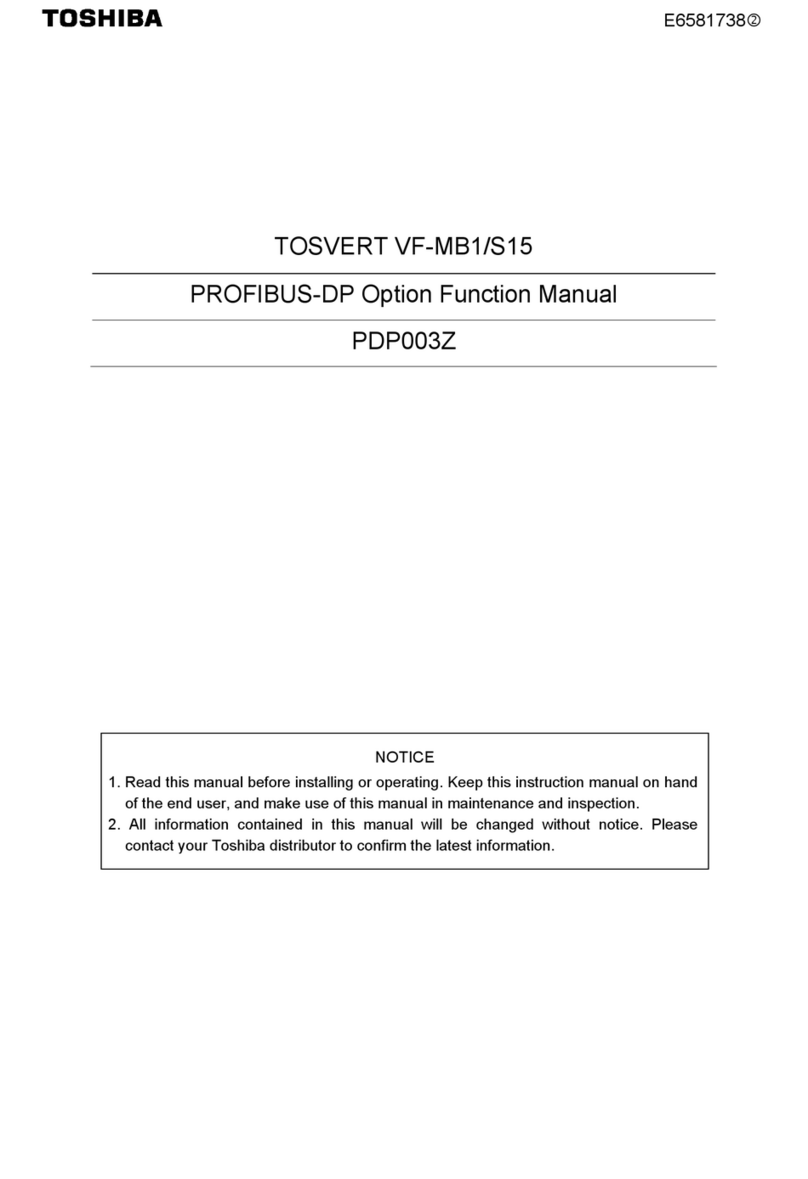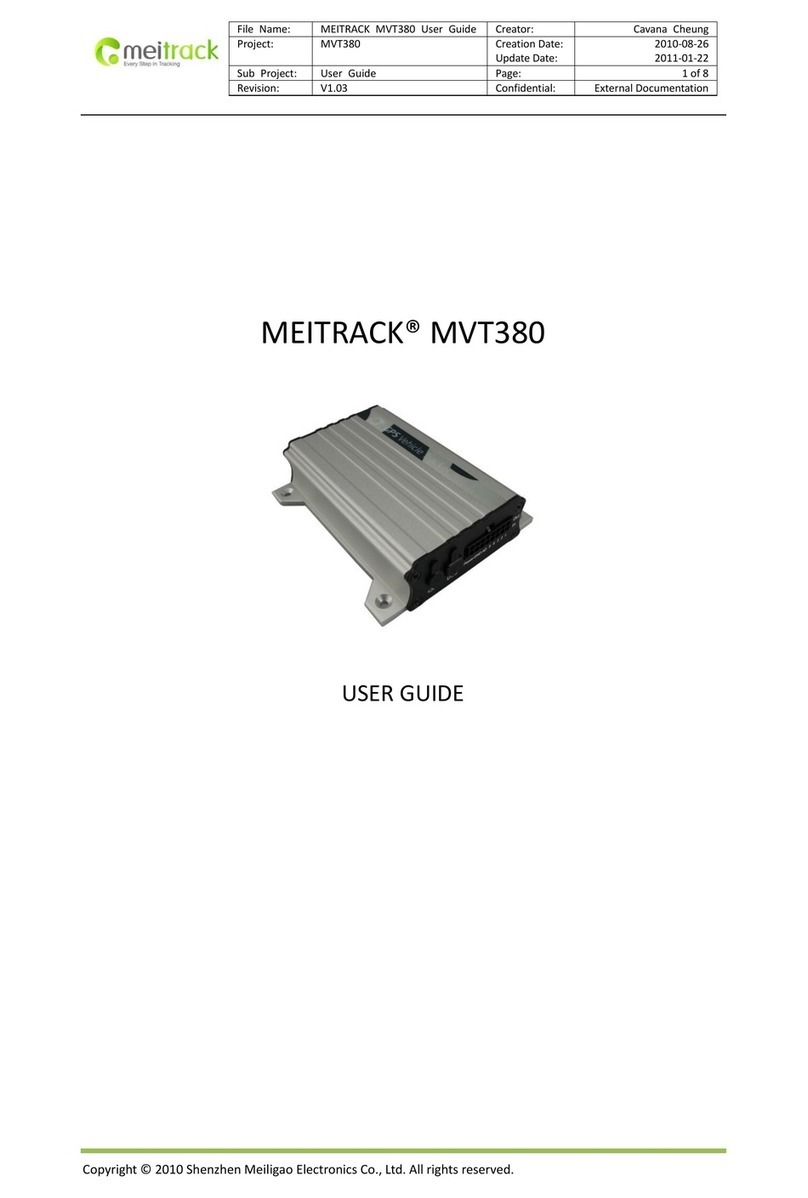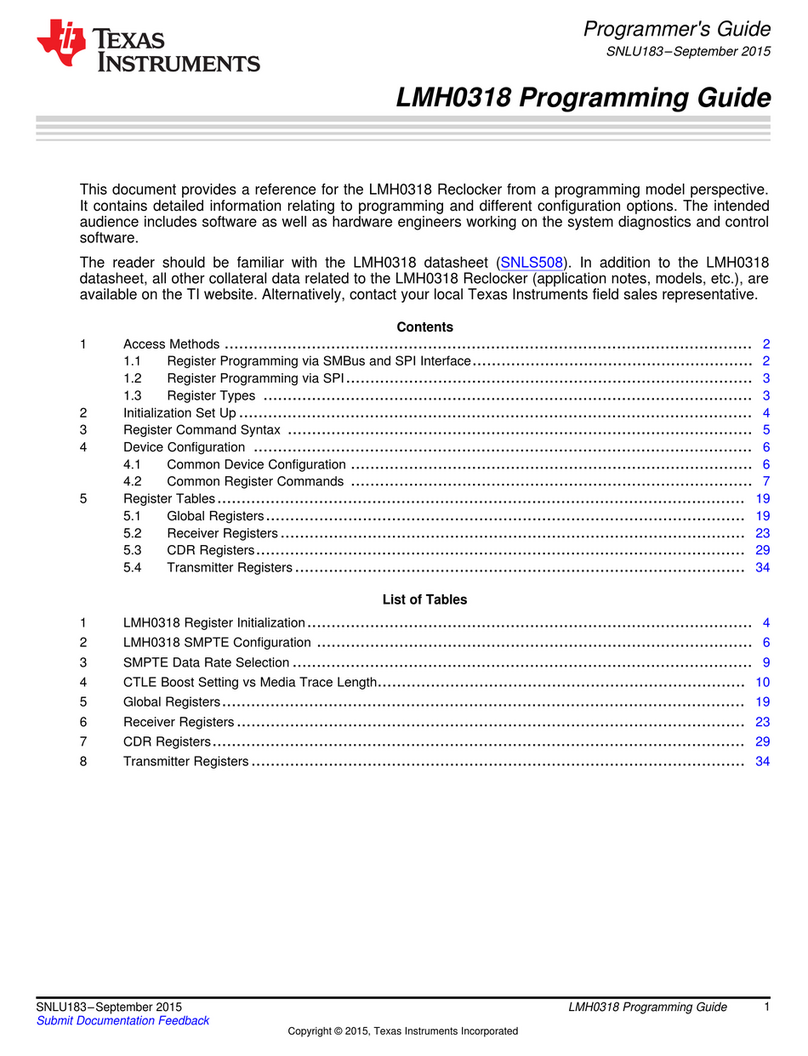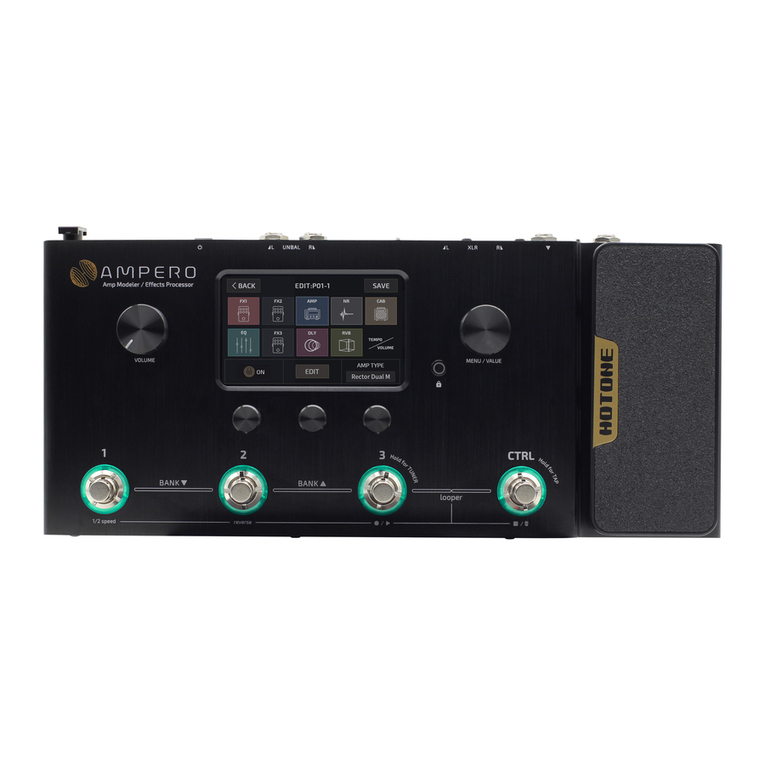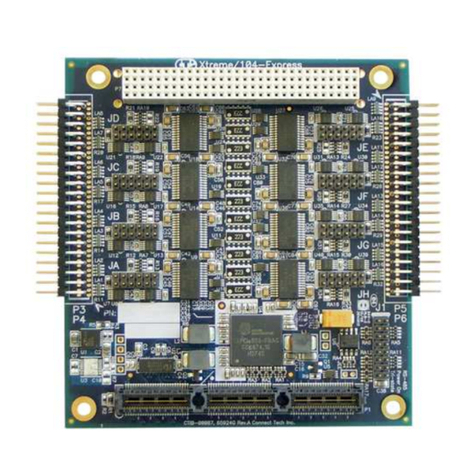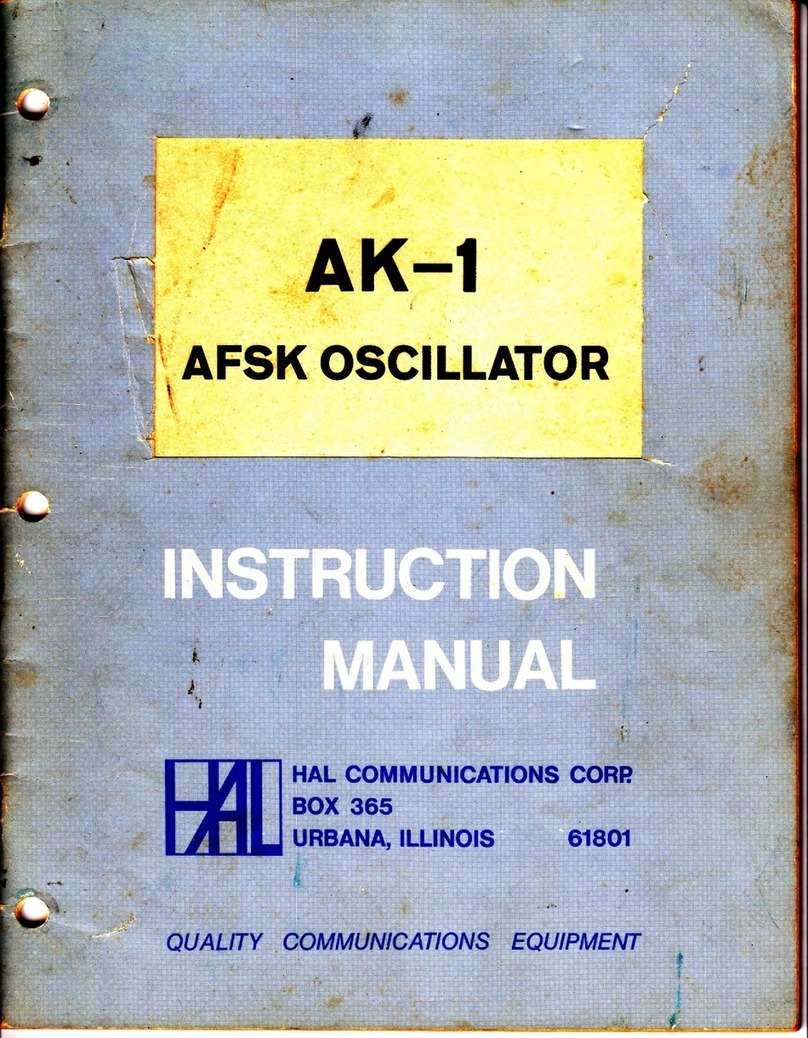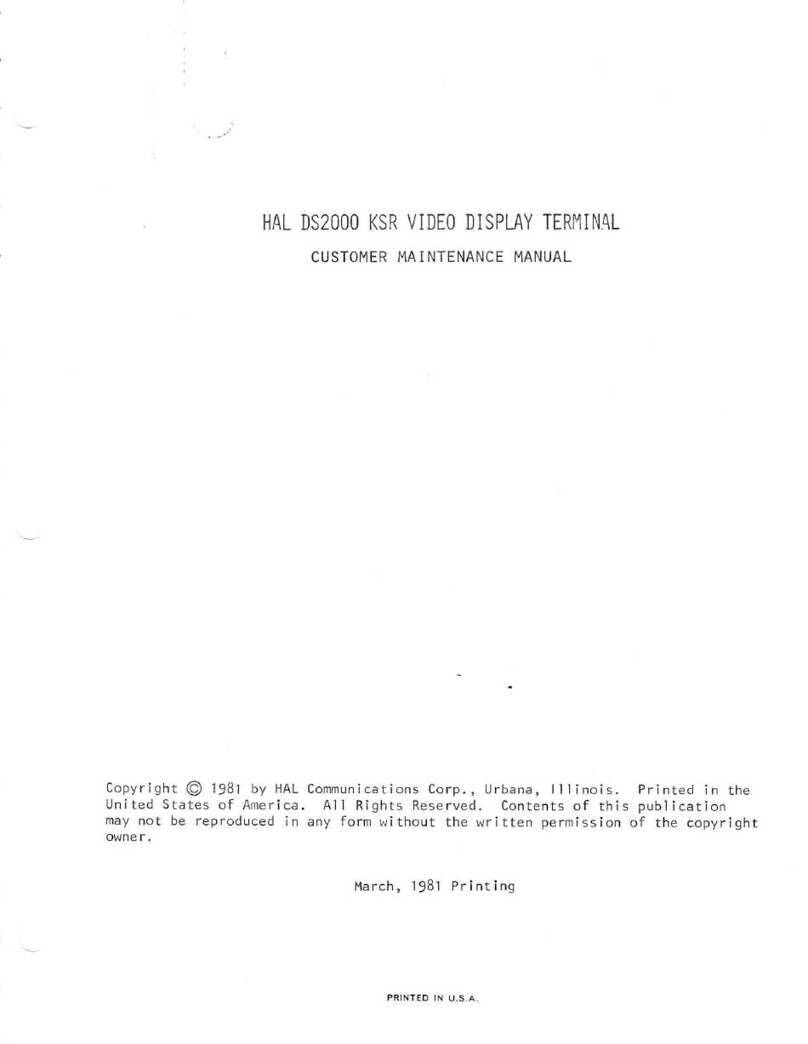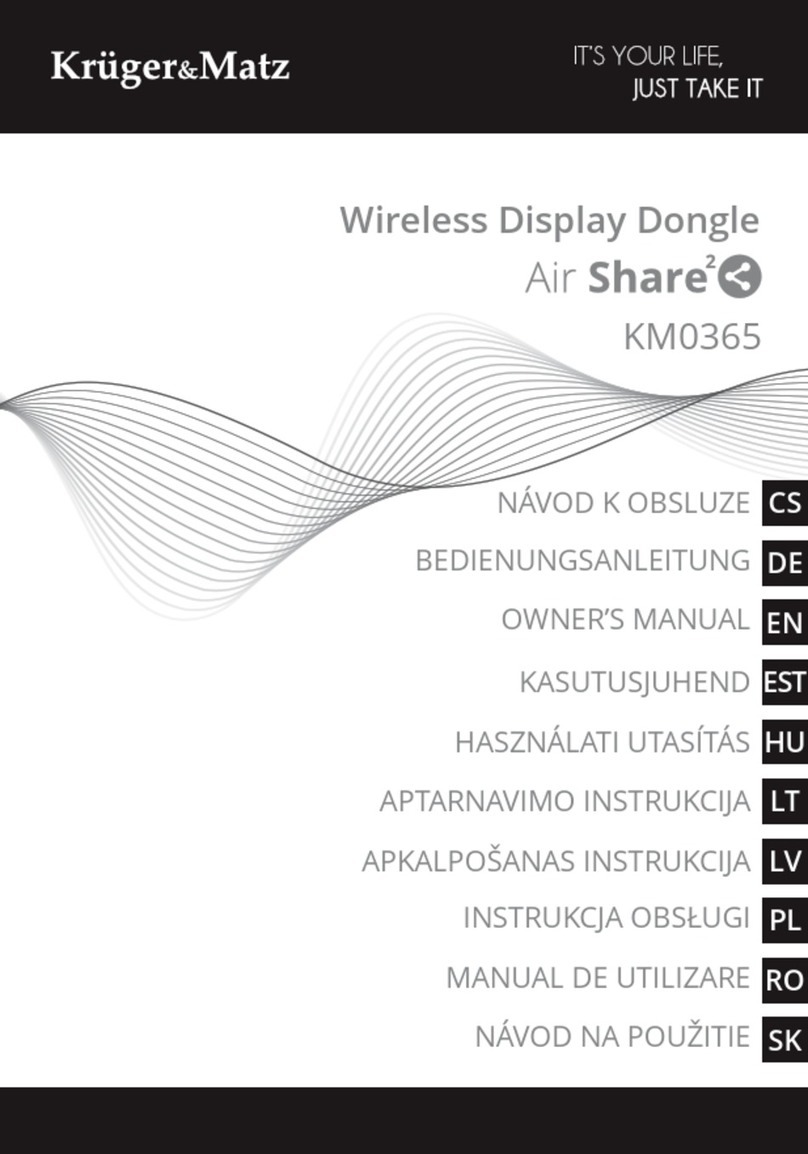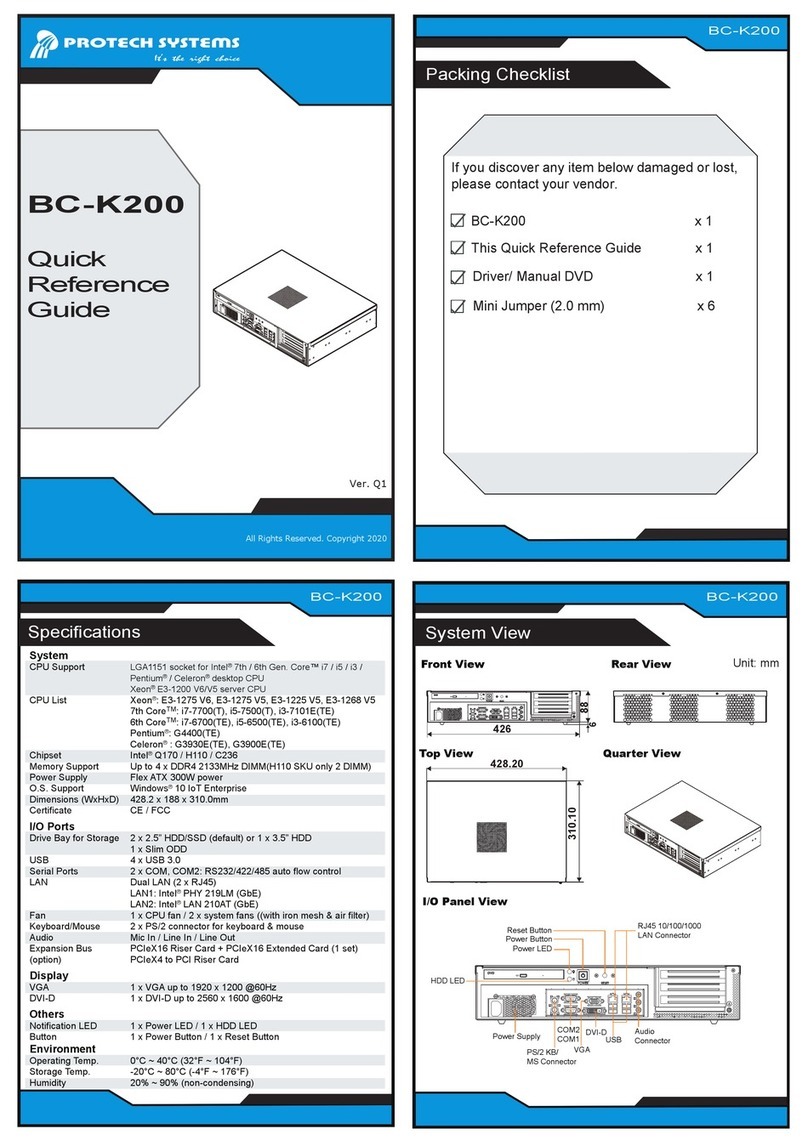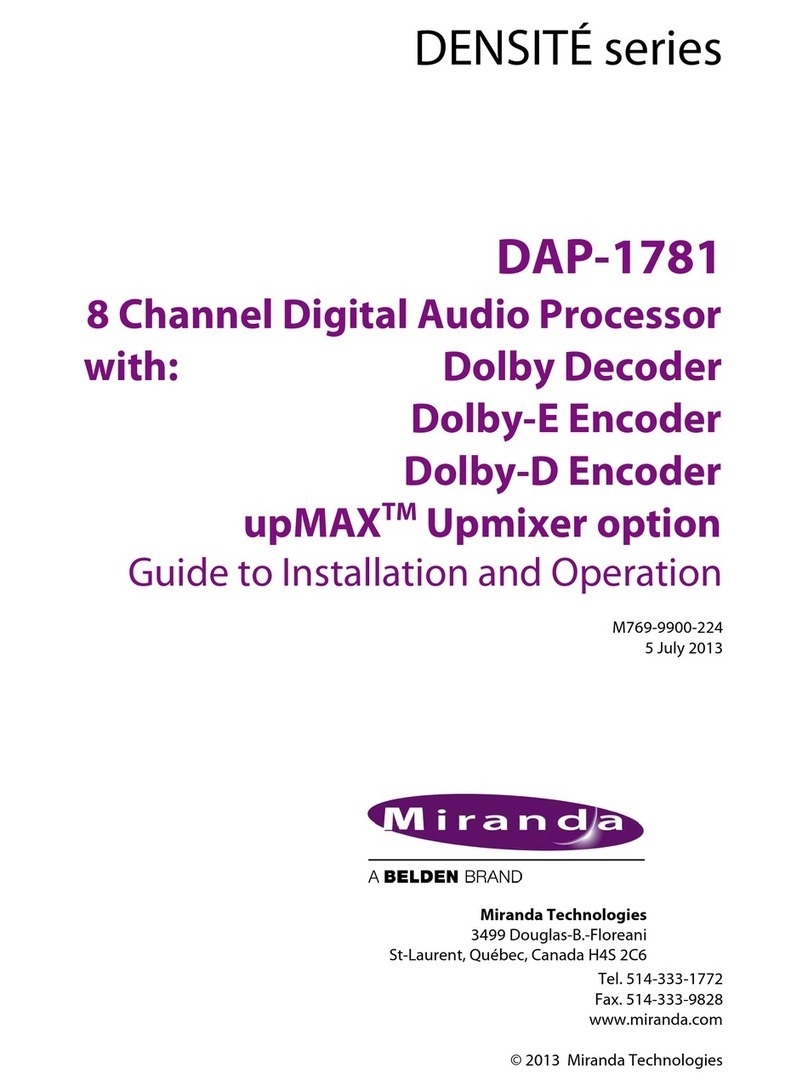
identif icatiorr. AII tones of the tone keyer are derived from high fre-
quency crystal controlled oscillators. The output signal is a low dis-
tortion sinewave generated in a digital-to-analog converter and then
f iltered in an active low-pass f ilter. A wide range of output ampl itude
(into 500 ohnrs) it available f rorl the ST-5000, adjustable with an internal
control. Unlike previous demodulators, the tone keyer data input circuit
is not internal Iy connected to the demodulator but is available on a rear
panel connector. Thus, separate transmit and receive circuits (full-duplex)
can be accomodated by the Sf-6000. Conversel y, wi th appropr i ate rear-panel
jumpers, the tone keyer can be connected to the demodulator for a common
transmit receive circu it (lralf -duplex) ut was the case for the ST-5
demodulator. However, the shift of the tone keyer is controlled by the
f ront panel SH IFT switches. Al so, the SEIISE switch (tlOnm REV) controls
both the tone keyer as well as the demodulator.
The 5T-6000 input and output circuits have been designed to allow a
maximum of user flexibility. Many signal and control lines have been
brought-out to rear panel connections. Both pre- and post-autostart data
signals are available on the rear panel as are the inputs and outputs of
two separate high-level loop switches. fhe internal 175 volt, 50 ma Ioop
supply is also connected to the rear panel. Thus, the demodulator output
can be used to directly key the loop or be first passed through additional
signal processing (such as the popular UART and digital control devices),
and then routed back through the ST-5000 keyer stages, with the option of
using or not using the internal loop supply of the 5T-6000. tn addition,
the ST-6000 has both output and input signal connections that are compatible
with both the ilA - RS-232C and MIL-STD-IBBC data signal Ievels.
The ST-6000 also includes a Keyboard Operated Switch (fOS) circuit
that can be used to automatically switch the transmit receive cont;-ol
circuitry of the station. fhe f..0S circuit senses teleprinter keyboard
and CW identification signal status. lf either the keyboard or the
CW-lD key is used, the K0S switching transistor turns "0|J" (low impedance to
groun,j). The KOS circuit also places the 5T-6000 demodulator circuits in a
"standby'r status to prevent feedback from the receiver whi le transmitting.
The NPN K0: switching transistor can be used to control a DC relay that is
supplied f rom a positive voltage source or a push-to-talk (PTT) control I ine
in a transn'ritter (providing the PTT Iine is derived from a positive DC source.)
Since the K0S sensing I ine is connected to the rear pan6l, it can also be
t r i ggered by externa I dev i ces .
The aud io input to the dt,modu lator and the aud io output f rom the
tone keyer are both 500 ohms balanced (o. unbalanced if jumpered) with
respect to gr,:u:,d and use aud io transformers to maintain DC isolation.
The oscilloscope signals for a crossed-ellipse oscilloscope display are
connected to a rear panel connection. The ST-5000 is furnished with
a front pane I tun i ng osc i I I oscope.
lnternal , e lectronical ly regulated + 12 volt power suppl ies provide
operating voltages for the demodulator, control, and tone keyer sections
of the 5T-6000. A 175 volt, 50 ma. loop power supply is also included
as a part of that option. fhe main power transformer of the ST-5000 can
l-2
